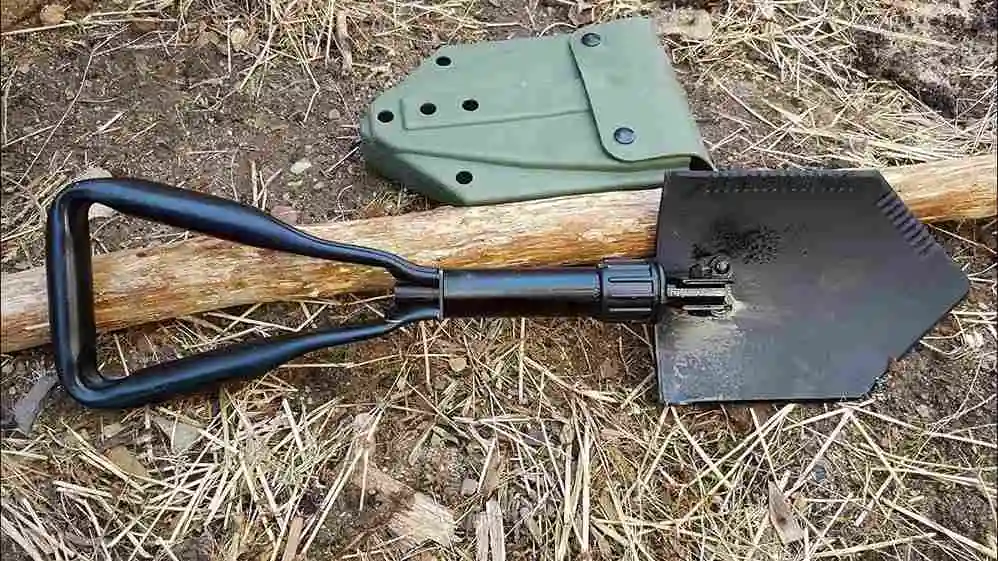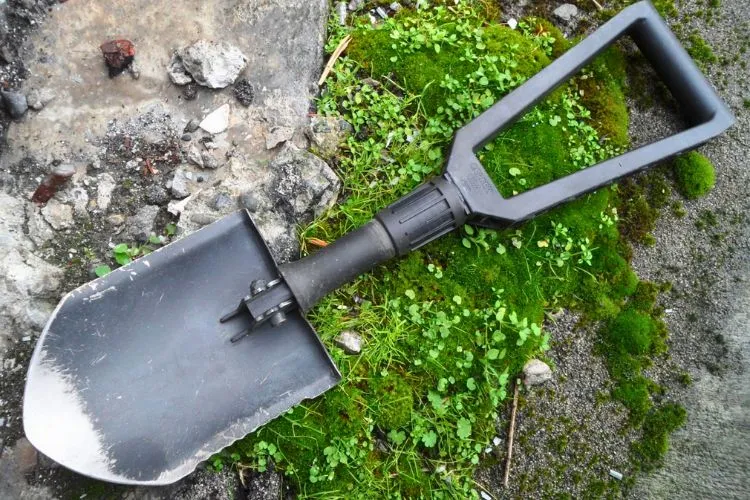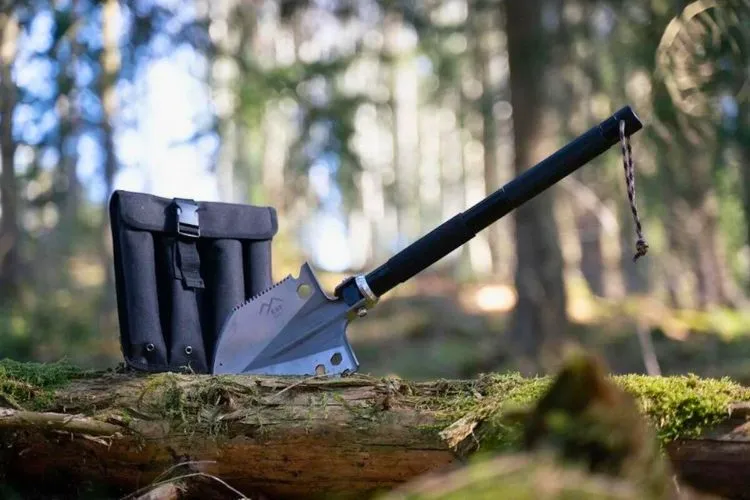The military entrenching tool, a compact, multifunctional device originally designed for soldiers, offers significant utility for both outdoor enthusiasts and emergency preparedness.
But, do you know why you should have a military entrenching tool?
This article explores the various benefits of incorporating a military entrenching tool into your gear, from its versatility in different environments to its essential functions in survival situations.

Learn why this tool is not just for the military, but a practical addition for anyone seeking to enhance their readiness for the unexpected.
Why You Should have a Military Entrenching Tool?
A military entrenching tool is a versatile and compact piece of equipment that serves multiple purposes, making it an essential item for outdoor enthusiasts, campers, hikers, and in emergency preparedness kits.
Its primary function is digging, which can be crucial for setting up camp, creating fire pits, or establishing sanitation facilities outdoors. Additionally, its serrated edge allows it to be used as a cutting tool for chopping small branches or clearing vegetation.
The compact design of the military entrenching tool makes it easy to carry, fitting seamlessly into backpacks or vehicle storage spaces without adding significant weight or bulk. This portability ensures that it is always on hand when needed, whether for routine tasks or unexpected situations.
Moreover, the tool’s durability and reliability, honed from military use and requirements, ensure it can withstand harsh conditions and rigorous use. This resilience makes it an invaluable tool not only in outdoor and survival scenarios but also in emergency situations such as natural disasters where quick digging or cutting may be necessary for rescue or escape.
Lastly, the military entrenching tool often includes additional features such as bottle openers, saw edges, and pickaxe functions, enhancing its utility and making it a multifunctional tool that can replace several individual pieces of equipment. This multifaceted capability makes it a practical and economical choice for anyone looking to minimize gear while maximizing functionality.
Comparative Analysis of Entrenching Tools
Entrenching tools and traditional shovels or spades serve fundamental, yet distinct roles in outdoor and survival settings. This comparative analysis delves into the differences between military-grade entrenching tools and standard gardening implements, focusing on key factors such as weight, size, durability, and functionality.

Understanding these distinctions can guide users in selecting the appropriate tool for their specific needs, whether for survival, tactical, or general outdoor use.
Weight and Size
- Military Entrenching Tools: Typically designed to be lightweight and compact, military entrenching tools are built for easy transport and storage, making them ideal for carrying over long distances or fitting into a small space in a backpack or emergency kit. They usually weigh significantly less than traditional shovels, often ranging from 1 to 3 pounds.
- Standard Shovels and Spades: These tools tend to be heavier and larger, designed for more stationary use such as gardening or construction. The weight can vary widely but is generally more than 3 pounds, which can add to user fatigue and make them less suitable for carrying on long treks or for rapid, mobile use.
Durability
- Military Entrenching Tools: Constructed for military use, these tools are made to withstand harsh conditions and rough handling. They are typically made from high-grade steel or aluminum, ensuring longevity and the ability to endure extreme environments without significant wear or damage.
- Standard Shovels and Spades: While there are high-quality shovels and spades available, the durability can vary greatly depending on the brand and materials used. Many are designed for civilian use and may not hold up as well under extreme conditions or continuous heavy use.
Functionality
- Military Entrenching Tools: These tools are multi-functional, often designed not just for digging but also for other tasks such as chopping, sawing, and even can opening. They may include features like foldable handles, adjustable angles for use as a shovel or hoe, and serrated edges for cutting.
- Standard Shovels and Spades: Typically, these tools have a single function: to dig or move soil. Some may have serrated edges for cutting through roots or tough soil, but they generally lack the multifunctionality of military tools. They are optimized for their primary task, with limited versatility beyond that.
Design and Ergonomics
- Military Entrenching Tools: Designed with the soldier in mind, these tools often feature ergonomic grips and foldable designs that allow for multiple uses and comfortable handling, even when wearing gloves. Their compact form factor when folded can also help prevent strain during extended use.
- Standard Shovels and Spades: Ergonomics can vary, with some models featuring comfortable handles and designs that reduce back strain. However, the larger size and fixed shapes of these tools can make them less adaptable to different tasks or user preferences.
Military entrenching tools and standard shovels or spades serve different primary purposes, reflected in their weight, size, durability, and functionality.
While military tools offer lightweight, durable, and multifunctional solutions suitable for various environments and tasks, standard tools focus on providing a more specialized but less versatile approach to digging and soil movement. The choice between them depends on the user’s specific needs, such as the intended use, environment, and necessity for portability and multifunctionality.
Practical Uses of Entrenching Tools in Survival Situations
Entrenching tools, originally designed for military purposes, have proven to be indispensable in various survival situations. Their compact size, combined with multifunctional capabilities, make them an essential item for anyone venturing into the outdoors or preparing for emergency situations.
Below, we explore how these tools can be used in different survival scenarios.

Constructing Shelters
In a survival situation, shelter is one of the primary concerns. An entrenching tool can be used to clear ground, dig trenches around the perimeter of a shelter to prevent water from flowing in, and carve out soil to create a makeshift bed.
The flat surface of the shovel can also be used to pat down and compact the earth for a more stable foundation. Additionally, the tool can assist in cutting and shaping natural materials like branches or snow, which can be used to build the shelter itself.
Creating Firebreaks and Gathering Firewood
In areas prone to wildfires, a quick and efficient way to prevent the spread of fire is by creating firebreaks—clear areas devoid of any flammable materials. An entrenching tool can be used to dig a firebreak swiftly. Moreover, the serrated edge found on many military entrenching tools can be utilized to cut small branches and gather firewood, essential for warmth and cooking.
Sourcing Water
Finding and accessing water is critical in survival situations. Entrenching tools can be used to dig for groundwater, especially in dry streambeds where water may be present just below the surface. They can also help in creating rainwater collection pits or diverting water from a stream towards a more accessible location.
Signaling for Help
In situations where rescue is needed, visibility is key. Entrenching tools can be used to clear large areas of vegetation to create SOS signals visible from the air. The metal surface of the tool can also reflect sunlight, creating a signal mirror to attract the attention of passing aircraft or distant rescuers.
Hunting and Food Preparation
While not a primary use, in a survival scenario, an entrenching tool can serve as an improvised hunting weapon or aid in the preparation of food. Its sharp edges can be used to cut meat, while the flat surface can serve as a chopping board.
Self-Defense
In extreme cases, an entrenching tool can be used as a means of self-defense. The sturdy construction and sharp edges make it a formidable tool against wildlife or other threats.
General Utility
Beyond these specific survival uses, entrenching tools are also valuable for general tasks such as burying waste, creating drainage channels, or even ice chopping in cold environments. Their versatility makes them an all-in-one tool that can replace several heavier, bulkier tools.
The practicality of entrenching tools in survival situations is undeniable. From constructing shelters and creating firebreaks to sourcing water and signaling for help, these tools provide a range of functions critical for survival in the wilderness. Their compact, multifunctional nature makes them a must-have in any emergency or outdoor adventure kit.
Conclusion:
The military entrenching tool is an indispensable asset for anyone engaging with the outdoors or preparing for emergency scenarios. Its compact design, multifunctionality, and durability make it a superior choice over traditional tools for a variety of survival and practical tasks.
Whether for building shelter, sourcing water, or ensuring safety, the entrenching tool has proven its worth beyond the battlefield. Incorporating this tool into your gear ensures you are better prepared for the unexpected, solidifying its status as a crucial piece of equipment for adventurers and survivalists alike.


